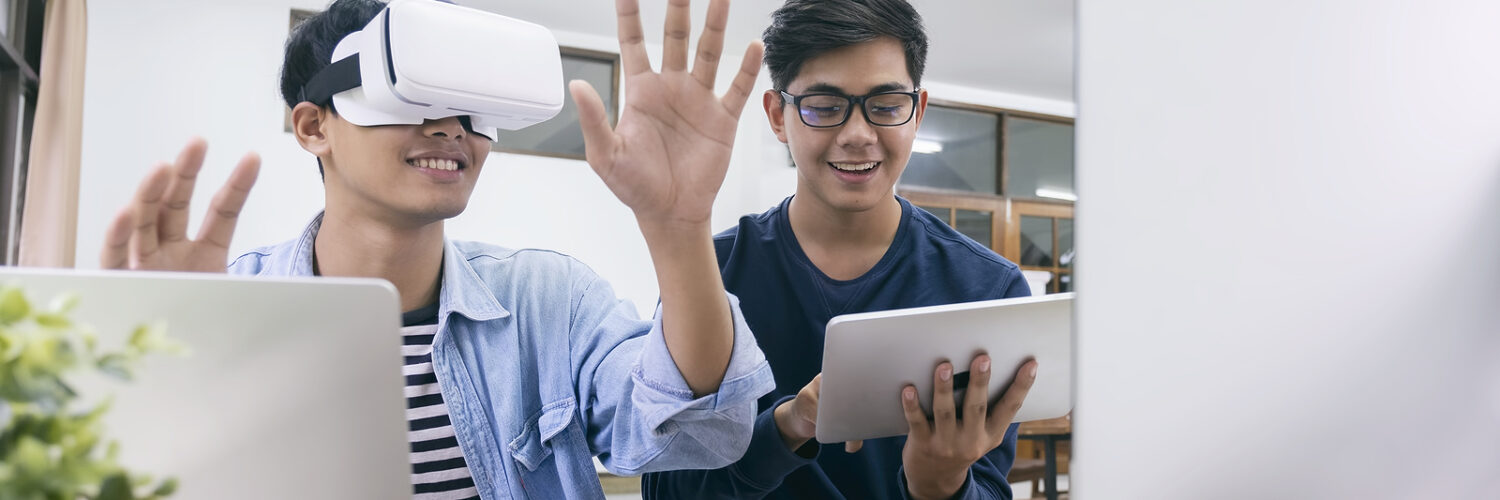by Dr Imants Latkovskis, University of Glasgow, Scotland.
As a member of University of Glasgow’s SEER research group (Scoping Extended Educational Realities), I was recently one of the authors of a comprehensive report into how extended reality (XR) technology is transforming education, as well as a whitepaper aimed at policymakers and tech industry actors alike, urging them to take notice of this and to take deliberate steps to ensure XR can be rolled out across educational institutions in a way that harnesses its full potential and mitigates potential risks. Both the report and the white paper will be made publicly available in a matter of weeks.
My involvement in this research group comes from a place of practice. As University of Glasgow’s XR Lab Manager, I have spent the last two years deploying immersive technology provisions in the University’s teaching and research, and supporting their large-scale adoption. In this position, I have seen first-hand the transformative power that XR technology – when done right – can have on teaching and learning.
XR is a unique kind of technology. In some ways, it builds on the incremental progress of the audiovisual technologies of the 20th century. Over the last century, we have been able to encode and transmit increasingly complex information through a range of technologies. In this way, XR represents the logical next step – a way of making audiovisual information immersive and multi-sensory.
But in many ways, XR also represents a break with those legacy technologies in that it enables an entirely new way of engaging with information and with each other – a way that is explicitly modelled on interactions that come naturally to us as human beings. For example, an XR lesson on the history of the printing press can see students operating the early modern machinery themselves – working out the order of operations, from blotting the metal typefaces with ink pads in their virtual hands, to rotating the hinges on the frisket to make the right kind of impression on the paper. If students aren’t able to attend a physical classroom – due to a pandemic, let’s say – they could nonetheless occupy the same virtual room as each other. They may even turn to each other to have a quiet, private conversation that others wouldn’t be privy to, just like if they were sharing a physical desk.
This sense of presence and immersion and physicality can offer countless opportunities not just for entertainment and storytelling – which is where XR technology is currently most at home – but for a wide range of educational experiences too.
At the core of it, XR technology enables educators to introduce a spatial, three-dimensional medium through which to explore a range of complex topics. First and foremost, this allows learners to visualise complex information in a spatial way, rather than as a series of two-dimensional cross-sections. For example, take the cross-sectional image of the human brain that anatomy and medicine students will be familiar with. This diagram helpfully sets out the structure of the brain and labels its constituent parts. However, a degree of accuracy is irretrievably lost when translating the spatial structure of the brain into any cross-section. Parts of the human brain overlap in such a way that makes an accurate cross-section impossible to do – it will either oversimplify or be difficult to read. By summoning a model of the human brain using augmented or virtual reality and then leveraging physical space to interrogate it as if it was a physical object, teachers in XR classrooms can overcome this set of problems entirely.
Next comes the interaction – by adding a layer of interaction, learners can engage with virtual objects and environments. Their actions can have consequences in virtual worlds, and through this deliberate cause and effect, they can learn valuable lessons. For example, a student can inject a virtual patient with adrenaline and witness the body’s physiological reaction from within a blood vessel, or a cardiac muscle cell. Students also have the freedom to fail safely and try again, thereby removing the risk of any negative real-world consequences.
Future challenges abound – for educators, policymakers, the tech industry – in order to roll out XR technology on a large scale and to harness its benefits. For example, current XR devices are not designed with the classroom in mind – they lack autonomous onboarding and offboarding systems or classroom management tools, there are privacy and accessibility considerations that need to be addressed. Using XR in education in 2024 means having to overcome these challenges classroom by classroom. We hope that the agents of change in this domain will take heed of our recommendations, and that the rollout of XR technology in the future will be much smoother as a result. And based on what I have seen already, the pay-off is going to be extraordinary.

Author
Dr Imants Latkovskis, Philosopher and Extended Reality Lab Manager at University of Glasgow














